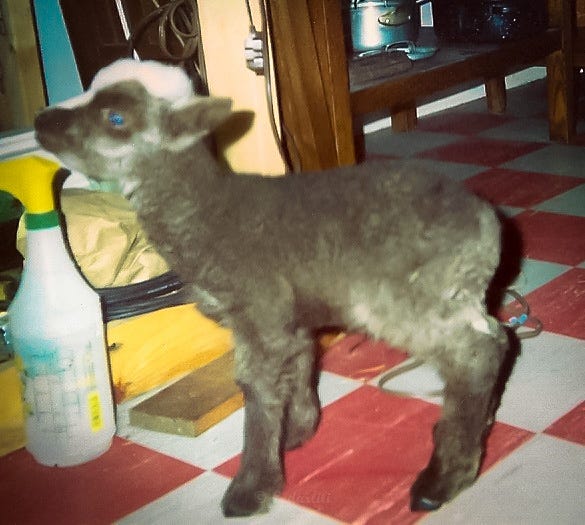This was originally published at the Mad Genius Club on August 5, 2017.
There is always more than one twist.
In order to make a strong thread, you have to make many, many twists. In order to sew pieces together, you need a thread run through them.
When I was a much younger woman, I spent a couple of years serving as an apprentice shepherdess. In practice, this meant I helped move sheep, feed sheep, clean fleeces, pitch hay and in general do scutwork. But I didn’t mind, because sheep are amiable companions when they aren’t being rockheaded dolts, and best of all, it was mostly outdoor work. One of the things I learned while I was doing this was how to spin a fleece into thread, and then the many ways a thread can be made into something else entirely, be that a garment, a blanket, or macramé. I never did learn how to knit, and I’m a clumsy spinner (not enough practice) but I can clean a fleece pretty darn quick and I know the basics of natural dyes and mordants. I do know how to crochet, and weave, but mostly I lack the patience to do that as anything but a whimsical amigurumi from time to time.
I’m talking about fleeces, but really I’m talking about writing, because what I learned about spinning forms a metaphor for creating a plot that runs through the disparate pieces of a book and ties them all together into a unified whole. Just like sewing up a garment, you take bits and scraps of cloth, and make them into something beautiful and richly colored. It’s not easy, by any means. For one thing, while I have done quilting, I ran around the Grange Hall as a tiny girl while the women sat and stitched, and I know how incredible the work can be when done by a master. My patchwork attempts are passable, but could be better. I’ll keep practicing.
A fleece from a sheep is, in essence, a lot of soft, fluffy hair. It’s hair, not fur: it will keep growing and growing until it’s cut. If you don’t shear a sheep every so often, it’ll die. Now, obviously this isn’t biologically premium, but a modern sheep is bred to hold onto it’s hair and not shed it, which is what wild-type sheep (and some goats) do. Once upon a time, gathering fleece to spin was a laborious process of gathering clumps of shed hair off bushes and thorny weeds, then cleaning it and carding it. Carding is the process of combing the hairs until they are all running in one direction. They still, if you take a clump and pull in opposite directions with both hands, will come apart. You’ll wind up with a tuft in each hand. But if you take that bit of fleece, and give it a twist, it’s harder to pull apart. Give it more twists, and suddenly you have yarn. Twist it tighter, with less fleece strands going into the spin, and you have thread.
Linen is a similar process, but the prep to yield strands is a lot more labor intensive. I’m not getting into that - I’ve never done it, although I’m familiar with the theory. And I’ve gotten sidetracked already from my thought.
A good plot has some twists in it. Readers who find the path smooth and easy to follow from opening to conclusion might bother to walk all the way to the end, or they may get bored and wander off, to leave the book unfinished forever. Throw in a few left turns, and suddenly they are wondering what will come next, and they will keep reading, compelled to find out what happens. In thread, the idea is to be as smooth and even as possible. In writing, you want slubs. Slubs are the funny little bumps and clumps that give raw silk, for instance, it’s characteristic ‘nubbly’ look. In a book, you want that sort of unpredictable thing in the plot. It’s still got the strong thread, but there are unique elements readers will only find in this story - it’s the slubs that will make your work memorable.
The more twists, the stronger the plot thread. But watch out! If you overspin thread, it starts to coil back up on itself - in DNA, that’s called supercoiling, and it’s part of how 6 meters of DNA can be packed into every single nucleated cell in your body (not every single cell - red blood cells have enucleated, and don’t have DNA) but it is considered less than ideal in spinning thread. It’s less than ideal in a book, too. Once that path has become so convoluted the reader loses track of what is happening, why, and to who, they start getting a headache and vowing to never read another of your books. I have a few authors I avoid for just this reason, personally. I’m sure some of you do, too.






My experience is that that longer the story, the thicker the ply has to be. Short stories are like thread. Novels are more like rope.
New words yea!
Amigurumi Turns out my sister makes them also.
Mordants fixes the Dye